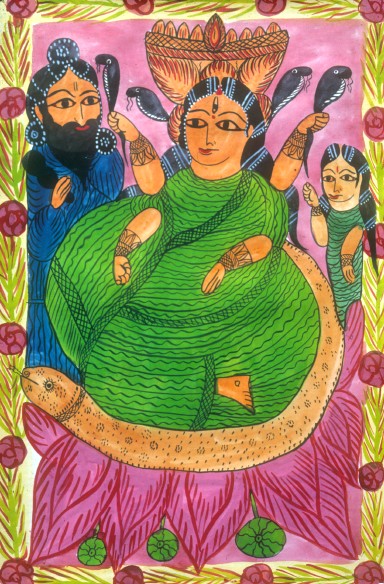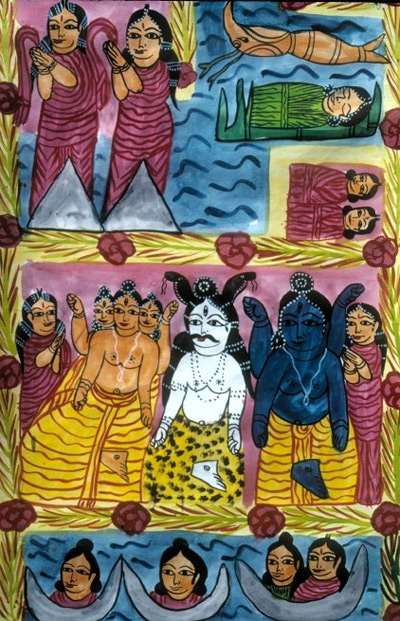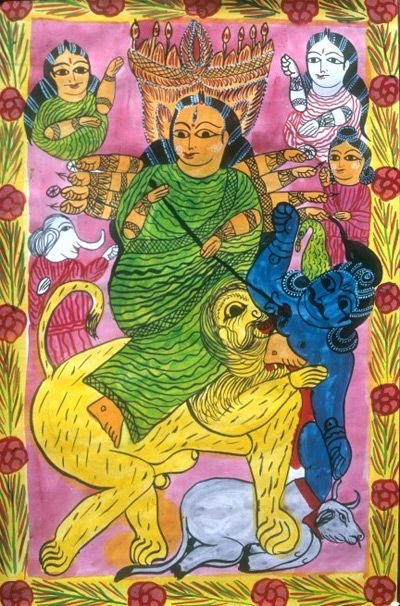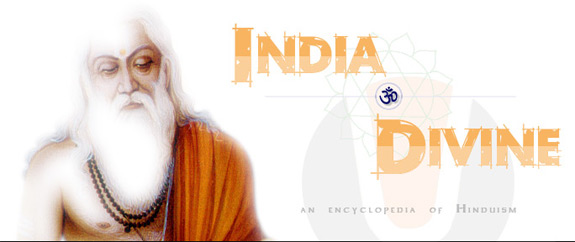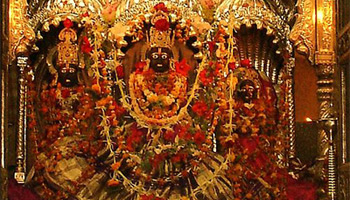Pusta Krsna: Sometimes we meet people in our preaching activities. They may, of course, claim to be very devout Christian or Muslim, but at the same time they will blaspheme Krsna. Is it possible that such persons can actually be associates of God?Prabhupada: No, no. It is just like in our Krsna consciousness movement there are so many Christians, so many Jews, so many Mohammedan, and Hindus. Everyone is there. It is a question of understanding. So in the beginning if... But if he's serious to understand what is God, then he will accept Krsna the Supreme Lord. If he knows what is God, then he'll understand, "Here is God." If he remains in darkness, he does not know what is God, then how he'll understand Krsna? He'll understand Krsna as one of us. That's all. But if he knows what is God then he'll understand. Yes, here is God, Just like if a person knows what is gold, then anywhere gold, he'll understand, "Here is gold." It does not mean only gold, in certain shop only gold is available. But if he knows what is God, what is meaning of God, that he will find in Krsna in fullness. Krsnas tu bhagavan svayam [SB 1.3.28]. The sastra says how He is Bhagavan, what is Bhagavan. You should understand and see from the activities of Krsna whether He is not Bhagavan. It requires brain to understand. I say, "Here is God." Now it is up to you. If you know what is God, then test it, and then you'll accept God. If you do not know how to test it, then you may refuse. That is another thing. You'll accept iron as gold. That is your ignorance. You do not know what is gold. But if you actually know what is gold, you will accept Krsna as God, there is no doubt about it. So this is the only platform, Bhagavad-gita. Everyone come and take to Krsna and understand God and learn how to love Him and your life is perfect.
Pusta Krsna: But if the Christians are saying that "This is the only platform, the Bible," and the Muslims are saying, "This is the only platform, Koran," and the community of followers of Bhagavad...
Prabhupada: But we have to see by the result. The result is... Only platform, that only platform, that is decided... Sa vai pumsam paro dharmah. That is actually religion. How? Yato bhaktir adhoksaje. If one has learned how to love God. If there is no love of God, then what is the use of claiming that this is the only platform? Where is the sign of love of Godhead? That is to be seen. Simply if you say... Everyone will say, "This, my, this property is the best, or my understanding is..." But there must be practical proof. The practical proof-say how to love God, what is the process of loving God? If you do not know your relationship with God and other's relationship with God, then how you know God? That is lacking. Nobody can give clear conception of God. Can the Christians give? Then where is love of God? If you have no understanding of what is God, where is the question of love? Love is not fictitious. You cannot love air. You love a person, a beautiful person, a beautiful woman. If you say, "I love air. I love the sky..." Where there is question of love?There must be a person. So who is that person we want to love? But they have no personal conception of God, neither they can describe the personal beauty, capacity, strength, sad-aisvarya-purnah. There is no such description. So they have got the conception of God, but actually they do not know what is God. But religion means you must know God and love Him. That is religion. That is first class religion. Is that clear or not?
Pusta Krsna: Yes.
Prabhupada: When there is question of love, then you must know what is God, then love. But if you do not know who is God, then how do you love Him?
Pusta Krsna: Are these actually the tangible signs by which one can judge what is real religion?
Prabhupada: Yes. Real religion is how to love God. And love cannot be done without knowing the person whom you love. That is the criterion, test. So if you have no conception, God, His personality, then how you'll love? Where is the question of love? Love is something tangible. It is not fictitious. So we accept, Krsna conscious people, Krsna is God, and we are worshiping Krsna. And we are making progress. Just see our behavior and other persons behavior and judge. Hm? What do you think?
Kuladri: We had one priest who came. He was discussing with Kirtanananda Maharaja. He did not know what God looked like, he never gave anything, never talked about God, but he said he loved God.
Prabhupada: Then? What kind of love it is?
Kuladri: Nor did he say his people ever came to church. He said, "At best they come once a week." He said that's all that is necessary.
Prabhupada: Well, love does not mean that you come once in a week at my house. Love means you come to my house, give me some presentation, and take something from me. Dadati pratigrhnati bhunkte bhojayate caiva sad-vidham priti-laksanam. Love means if you love somebody, then you must give him something, you must accept something from him. Dadati pratigrhnati. You must disclose your mind to him and he should disclose his mind to you. Dadati pratigrhnati guhyam akhyati prcchati, and bhunkte bhojayate. If you love somebody, you give him something eatable and whatever eatable he offers you accept. These six kinds of exchange makes love. But if you do not know the person, the boy or the girl, then where is the question of love? Love begins... If you love some girl, if you love some boy, then you give something, some presentation, and he gives you some presentation. That develops love. You give something to eat and whatever he gives you to eat, you eat. You disclose your mind, "My dear such and such, I love you. This is my ambition." He dis... These are the exchange of love. So if there is no persons to person meeting, where is the question of love? That is not love. If I love somebody and weekly I visit that house, "This is the house," that's all. Where is the exchange of love? Love means there is exchange. If you love somebody, if you have not given anything to that somebody, neither you have taken something from him, where is the love? Is that love? Means imperfect knowledge. You love... The conclusion is religion means to love God, and to love God means you must know who is God. There cannot be any other alternative. You must know the person who is God. Then you exchange. That we are teaching. We are asking our disciples to rise early in the morning, offer mangala arati, then bhoga arati. Are we so fools, rascals, that we are wasting time in worshiping a doll like that? Sometimes they think like that. But that is not the fact. You know definitely, "Here is Krsna. He is God, and we must love Him like this." That is the superexcellence of Krsna consciousness movement. We do everything definitely on positive platform. Is that clear? Huh? Or anyone, any question?
Pradyumna: Then... You said we must know God before we can love Him. So that means devotional service is preceded by knowledge.
Prabhupada: Yes. Yes. Yes, that is the process in the Bhagavad-gita. There are 18 chapters. The whole 18 chapters is the education how to know God. And when Arjuna completely in awareness he accepted, "Krsna, You are param brahma, param dhama [Bg. 10.12]," that is understanding. Then surrender, sarva-dharman parityajya [Bg. 18.66]. Unless you know God, how you'll surrender? If some third class man comes, "You surrender unto me." Will you do that? Why shall I surrender to him? You must know, "Now, here is God. I must surrender." The 18th Chapter is described to know God, and then Krsna proposes, "Surrender unto Me." Then Arjuna did it, "Yes." So without knowing, how you can surrender? Know God. Then you surrender. Otherwise how, blindly, you can surrender? That is not possible. So this is the science how to know God, Bhagavad-gita. The preliminary. If you want to know more, then read Bhagavatam. And if you are in intense love with God, then next, Caitanya-caritamrta, how the intensification can be more intensified. That is Caitanya-caritamrta. So Bhagavad-gita is the preliminary book to understand God and surrender. And from the surrendering point, further progress, that is Srimad-Bhagavatam. And when the love is intense, to make it more intensified, that is Caitanya-caritamrta. Just like Caitanya Mahaprabhu, mad after God. Sunyayitam jagat sarvam govinda-virahena me. "I find everything vacant without Krsna." That is the supreme ecstasy. So these things cannot happen (chuckles) without love. If you love somebody, then if he's not there you find everything vacant. Otherwise why? There are so many things. "How," people will say, "you are seeing vacant? Everything is filled up." That is another stage, transcendental platform. Lover and beloved, they can understand. Sunyayitam jagat sarvam govinda-virahena me. That is the supreme stage of love. Is that clear or not?
Pradyumna: There's just one more thing. What's the minimum knowledge one must have to...
Prabhupada: God is great. That's all. God is great. Krsna proved that He's great. Therefore He's God. Everyone says, "God is great." Allah akbar, Muslims say. God is great. It is translated, "God is great." And Hindu says, param brahma. So God is great. So Krsna proved that He is all-great. Therefore He is God. Krsna, when He was present, He proved it that He is the great. Therefore He's God. If you accept God is great, and if you find somebody, he is great in everything, then he's God. How can I deny it? At least, you can see Krsna great by His Bhagavad-gita. It is still going on. Five thousand years passed, still Bhagavad-gita is accepted as the greatest book of knowledge all over the world. Even among the Christians, among the Muslims, those who are really learned, they take it, "Yes." That is greatness of Krsna, the knowledge. Who can give such knowledge? That is the proof that He is God. Aisvaryasya samagrasya viryasya yasasah... Jnana, knowledge. Where is such knowledge throughout the whole world? Everything, every line is sublime knowledge. If one studies scrutinizingly Bhagavad-gita, you find Krsna is Supreme Lord.
Pusta Krsna: Next question, Srila Prabhupada. Question nineteen. "Do you envisage or envision a different role for Hinduism in the Western countries where the influence of other great religions has been felt for centuries?
Prabhupada: No. There is no different role. God is one. God cannot be duplicate. As it is stated in the Bhagavad-gita that mattah parataram nanyat kincid asti dhananjaya [Bg. 7.7]. "There is no more superior authority than Me." That is God. Now people is to understand that Krsna is God. There is no different role. The role is the same. Five thousand years Krsna said that "I am the supreme authority. There is no more superior authority than Me." Still He is so. So we are simply attempting to introduce Krsna. Nobody attempted. Although five thousand years past, nobody attempted to introduce the supreme authority Krsna. We are just trying to introduce following the orders of Sri Caitanya Mahaprabhu. He, five hundred years appeared. He is Krsna. He wanted that this Krsna consciousness should be spread all over the world.
prthivite ache yata nagaradi-grama
sarvatra pracara haibe mora nama
Krsna is not for India. He is for everyone because He is God. He claims that "I am the seed-giving father for all living entities." Not only the human society, but also other living entities like the aquatics, the insects, the plants, and the animals, all living entities. He says, aham bija-pradah pita [Bg. 14.4]. Everything is there, but this cult of Krsna consciousness, or Bhagavad-gita as it is, was not preached properly. Everyone interpreted Bhagavad-gita in his own way to satisfy his own whims. We are just trying for the first time to present Bhagavad-gita as it is, and it is being effective. So it is not a different role. It is the actual role. Nobody tried for it. Therefore Krsna was unknown, but we are trying for this for the few years. But because it is reality, it is being accepted. It is being accepted. No attempt was made that. So it is not a new role. The role is already there: to preach. That is Caitanya Mahaprabhu's vision. He says especially to Indian people,
bharata bhumite manusya-janma haila yara
janma sarthaka kari' kara para-upakara
[Cc. Adi 9.41]
Indians are meant to do this business for para-upakara because all over the world they are unaware of Krsna. So anyone who is actually Indian, he should attempt to broadcast the message of Bhagavad-gita and Krsna. That is order of Caitanya Mahaprabhu.
bharata bhumite manusya-janma haila yara
janma sarthaka kari' kara para-upakara
[Cc. Adi 9.41]
This is paropakara. They are suffering without any knowledge of Krsna. Give them this knowledge. That is para-upakara, doing welfare activities to others. So that attempt is now being made, and people actually accepting. So it not a new role. The role is already there. Caitanya Mahaprabhu five hundred years told, years before He told it. But the so many swamis and yogis, they came here, they never introduced Krsna as the Supreme Personality of Godhead. Now it is being done and people are accepting, naturally. This is Krsna consciousness movement. So if everyone joins, either Indian, non-Indian, in this movement there will be one religion and there will be peace. Peace will prevail. This is the only way.
bhoktaram yajna-tapasam
sarva-loka-mahesvaram
suhrdam sarva-bhutanam
jnatva mam santim rcchati
[Bg. 5.29]
This is the way of santi, understand Krsna, that He is the supreme enjoyer, He is the supreme proprietor, and He is the supreme friend for everyone. Accept Krsna as your friend, you'll be happy. This is the message of Krsna consciousness.
Pusta Krsna: This next question is very closely related to the last question. Question twenty. "What is your view regarding proselytization or preaching? If you are..."
Prabhupada: It is not proselytization. Proselytization has no meaning. To bring one to the real understanding. Krsna says that mamaivamso jiva-bhutah [Bg. 15.7]. All living entities are His part and parcel. He claims, sarva-yonisu kaunteya [Bg. 14.4]. In all forms of life, as many living entities are there, aham bija-pradah, I am the seed-giving father. So the natural position is that every living entity, not only human being, but also animals, plants, everyone... So why not Indian, American, or Czechoslavakian, everyone is part and parcel of Krsna? So it not the process of proselytizing to convince the idea. It is actually bringing them to their real position, that they're all part and parcel of Krsna. It is not artificial proselytization that "You are Christian, now you are Hindu." Or "You are Hindu, now you are Christian." "You are a sweeper, now you are harijana." It is not like that. It is actually bringing him to his own position, part and parcel of God. It is not... Proselytization will not stand. When one comes to the real understanding of his position, then that will continue. This Krsna consciousness movement is that. Bringing one to the original position. He's in diseased condition, he's thinking otherwise than servant of Krsna. Now this movement is trying to bring everyone to the position that he is eternal servant of Krsna. It is not a rubberstamp proselytization that "You are Hindu, now you are Christian." Or "You are Christian, now are Hindu." So if he does not know what is his position by simply stamping that he is Hindu or Muslim or Christian, what benefit he will derive?
Pusta Krsna: The same ignorance.
Prabhupada: If you keep him in the ignorant platform, then what is the benefit of making a Hindu Muslim or Muslim Hindu? That was going on, "holy war," between Christians and the Muslims. Because both of them will die. (chuckles) And they are engaged in holy war. War, but "holy war." "Holy impiety." Artificial change of "ism" will not help. One must know the philosophy of life. One must know what is God. One must learn how to love God. That is real life.
Pusta Krsna: There is one more question, Srila Prabhupada. Question 21. "Are changes visible in Hinduism in its doctrinal content, mode of individual and collective worship as a result of Hinduism's contact with the West?"
Prabhupada: Yes, they are worshiping... This is... First of all, you must forget that this Krsna consciousness movement is not Hinduism. It is Vaisnavism. Vaisnava means Visnu is the Supreme Personality of Godhead and one who loves Visnu or loves God, he is Vaisnava. So Hinduism is not like that. Present conception of Hinduism, they have got so many demigods. Demigods are there in the Vedas, but demigod worshipers, they are all materialistic persons. It is stated in the Bhagavad-gita that kamais tais tair hrta-jnanah yajanti anya-devatah [Bg. 7.20]. Those who are worshiper of demigods, they are lusty. Kamuka. And the kamuka platform is material world, lusty. Everyone is trying to enjoy sense gratification. So demigod worship is for sense gratification. If you worship Durga, then you pray, "Mother Durga, give me name, fame, wealth, good wife, and so on, so on." Dhanam dehi rupam dehi rupavati-bharyam dehi. Simply demanding for sense gratification. So that is not love of Godhead. That is to select one agent of God and exact from him as much as you can for your sense gratification. That is not recommended in the Vedic religion. Vedic religion, although there are demigods, but the ultimate is om tad visnoh paramam padam sada pasyanti surayah. Those who are suraya, actually advanced, they see to the Visnu paramam padam. Visnor aradhanam param. The worship of Visnu is the supreme worship. So actually everyone should be worshiper of Visnu. And that is Vaisnavism. So Vaisnavism means for everyone or sanatana dharma. That I have already explained. The human.... The living entity is sanatana. Mamaivamso jiva-bhutah jiva-loke sanatana [Bg. 15.7]. He is sanatana. God is sanatana. The exchange between God and the living entity is called sanatana-dharma or Vaisnavism. So we are teaching that. We are not teaching Hinduism, Muslimism, Christianism. We are teaching how to love God. That's all. There is no question of proselytization. It is the natural. We are, by nature we are lover of God. Just like father and son. The love is already there. It cannot be extinguished. The father and son may be separated for many, many years, but when they come together the affection immediately revives. So we are teaching that, that we have got eternal relationship with God and revive it. We are embarassed by establishing artificial relationship with my family, country, and society, and so-called religions. These are all artificial. Real relationship, that "God is great and I am His servant," that is real religion. So we are teaching that thing.
Pusta Krsna: So the teaching is the same in India as it is in the Western countries.
Prabhupada: Yes. That is being proved. Otherwise how they are worshiping Krsna all over the world?
Pusta Krsna: This question here is "In doctrinal content and mode of individual and collective worship..." Is that to say that in your preaching in the Western countries and your preaching in India, you haven't attempted... In the Western countries where there is so many mlecchas, outcastes, so to speak.
Prabhupada: That is accepted by Krsna. Even one is mleccha. Mam hi partha vyapasritya ye 'pi syuh papa-yonayah [Bg. 9.32]. So there is no question. That is artificial. One is mleccha or one is brahmana, but that is artificial. That is skin. But within the skin of the mleccha or the brahmana the same spirit soul is there. Therefore those who are pandita, those who are learned,
vidya-vinaya-sampanne
brahmane gavi hastini
suni caiva sva-pake ca
panditah sama-darsinah
[Bg. 5.18]
One who is actually learned, he sees the same spirit soul within the brahmana, within the mleccha, within the cat. (end)
